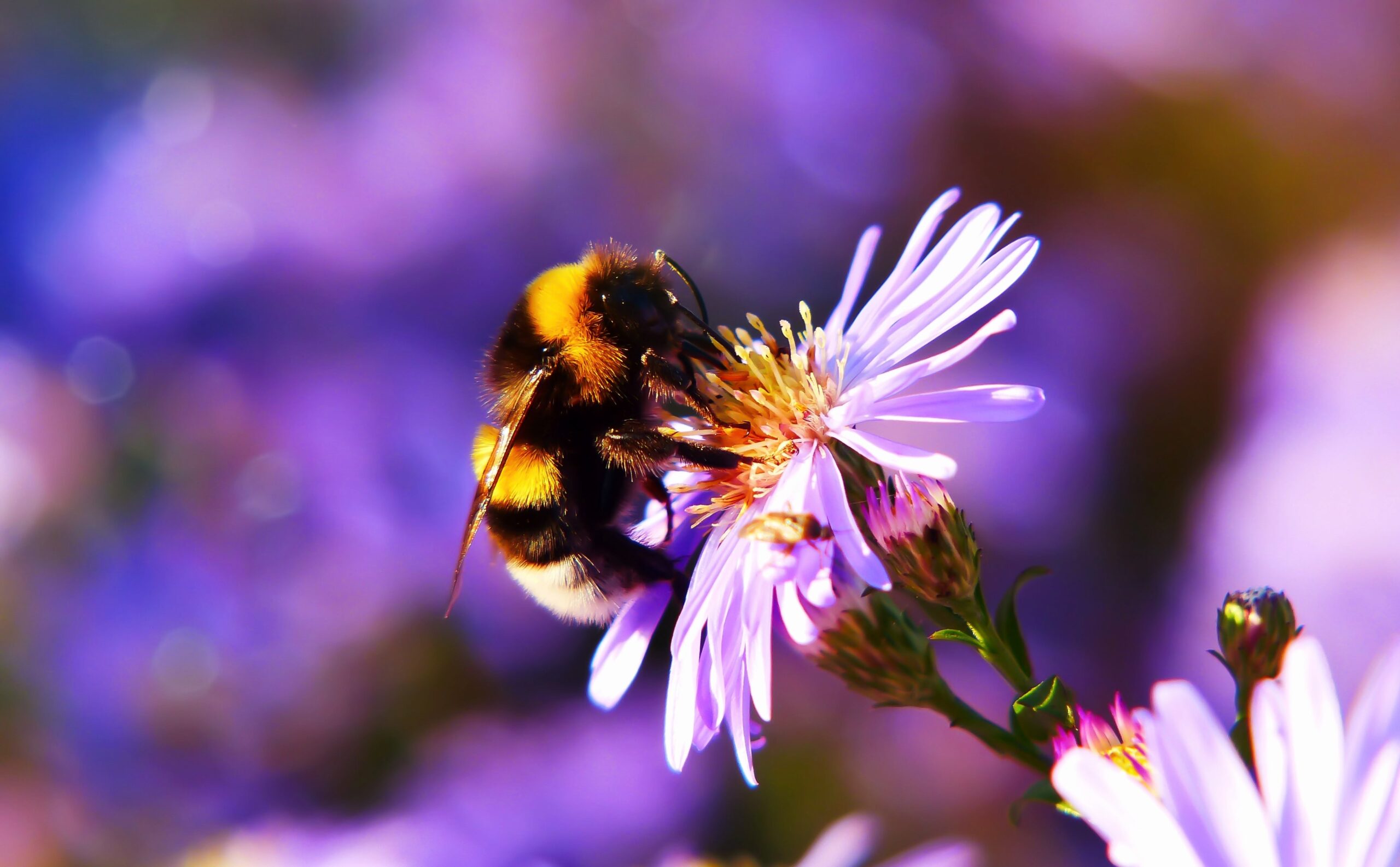‘Urban gardens for wild bees’: What flowers to plant in Autumn to help inner-city bees
With recent reports finding that urban beekeeping is ‘unsustainable’ in UK cities and particularly London, experts advise what is best to plant now for wild bees and reveal the correct way to save a struggling bee!
In the UK alone 35 species of wild bees are under threat of extinction. This has led to the increasing popularity of beekeeping in urban areas to provide homes for our ‘inner-city bees’.
Unfortunately, every time a new building development is constructed on green space another habitat and is irreversibly lost for wild bees which are crucial sources of nectar and pollen. Land use has changed drastically in the last few decades – according to environmental group Plantlife 97% of wildflower meadows have been destroyed over the last 100 years.

Wildlife expert Sean McMenemy from wildlife supplies website Ark Wildlife offers his gardening advice and speaks to experts for urban-planting, as well as providing his own insight into how to help a struggling bee. What can be done at home to become more bee-friendly?
How you can help bees by urban-planting
The more our cities harbour natural plant life, the better our urban bee populations will fare – so even if you’ve only got a small garden, a balcony, a patio or a tiny pot on the window ledge you can make a real difference.
The best flowers you can plant for bees in autumn and winter include:
- Purple flowers like lavender, buddleja and catmint, as bees can see purple more clearly than other colours
- Dahlias, cornflowers and ivy for the last of late summer
- Perennial Sunflower and Mahonia for late autumn and winter
- Herbs like thyme and rosemary
- Honeysuckle and clematis in the winter
- Pink cyclamen, Hesperantha and Winter flowering
heathers - Bluebell bulbs can be planted in autumn to prepare for next spring
- Other bulbs to plant to support bees come spring time are crocus, snake’s head fritillary, alliums and grape hyacinth
Carolyn Dunster, specialist in city gardening and author of Urban Flowers, says, “Late planting for summer and autumn could include scented climbers such as honeysuckle and jasmine and ivy flowers are hugely attractive. It’s not too late for annual and perennial flowers that bloom into October such as Verbena bonariensis, Nicotiana, Monarda and nasturtiums. Any brightly coloured, single-petalled flowers are good – check out plants for pollinators on the labels.”
Bees play a pivotal role as go-betweens in nature’s life cycle, pollinating the plants we eat and encouraging our environment to naturally flourish.
Those living in urban areas throughout the UK can help by creating a bee-friendly flower garden in whatever space is available, no matter how small. It’s not too late in the year for planting flowers either – there’s still options for late blooming plants that can be a great for bees!
How to help wild bees find a home in your garden
Sean McMenemy, wildlife expert at Ark Wildlife, recommends “Even with a small outside space you can help create a home for bees, either by buying a ready-made cavity-nesting bee habitat or building one yourself using a wooden box, bamboo canes and hollow plant stems.”
“Ensuring that your outdoor space has shady patches where bees can stay cool, and access to a water source, can also make a real difference.”
How to identify and help a struggling bee
Bees are prone to cooling, a sudden shower or cold wind can catch them off guard. They normally will crawl to cover to ‘wait out’ the hazard, returning to their task after a short rest.
Sean McMenemy says “It is always better to wait than intervene. Bees often take a rest or break and an inactive bee does not mean it is in difficulty. If a bee remains in the same place for longer than 30-45 minutes, it is likely to need help.”
“Honey, brown sugar and artificial sweeteners should be avoided and never offered to bees. Commercially available honey may carry pathogens that could infect bees if it were fed to them.”
Here’s what Sean recommends –
- Is it in imminent danger i.e. could it get stepped on or hit? If so, safely move it to a quieter spot and leave it to rest.
- Is it in the rain? Move it to a sheltered spot.
- Is it on the underside of a flower or leaf? It’s likely to be taking a rest, so leave it in peace but come back in 30 minutes or so.
- If it’s been inactive for 35-45 minutes it may need help. Ideally move it on to nectar rich flowers in a sunny spot. Natural food and warmth is the best thing for it.
- If no sun / food is available you can move it to a warm spot (ideally outdoors, try to avoid taking them in houses) and offer it a little white sugar and water solution, just a few drops in front of it. Do not risk it falling in the solution as this may harm it.
Sean McMenemy says “The Bumblebee Conservation Trust is an excellent UK charity whose mission is to increase the number and distribution of bumblebees. They work for a future where bumblebees are more numerous and valued in society”.
Here are some charities you can donate to which do excellent work in conserving the bee population:
The Bee Friendly Trust are particularly focused on creating urban habitats for bees
The Wildlife Trusts are involved in a number of projects that protect bees
Give Bees a Chance aims to boost public awareness of the importance of bees
